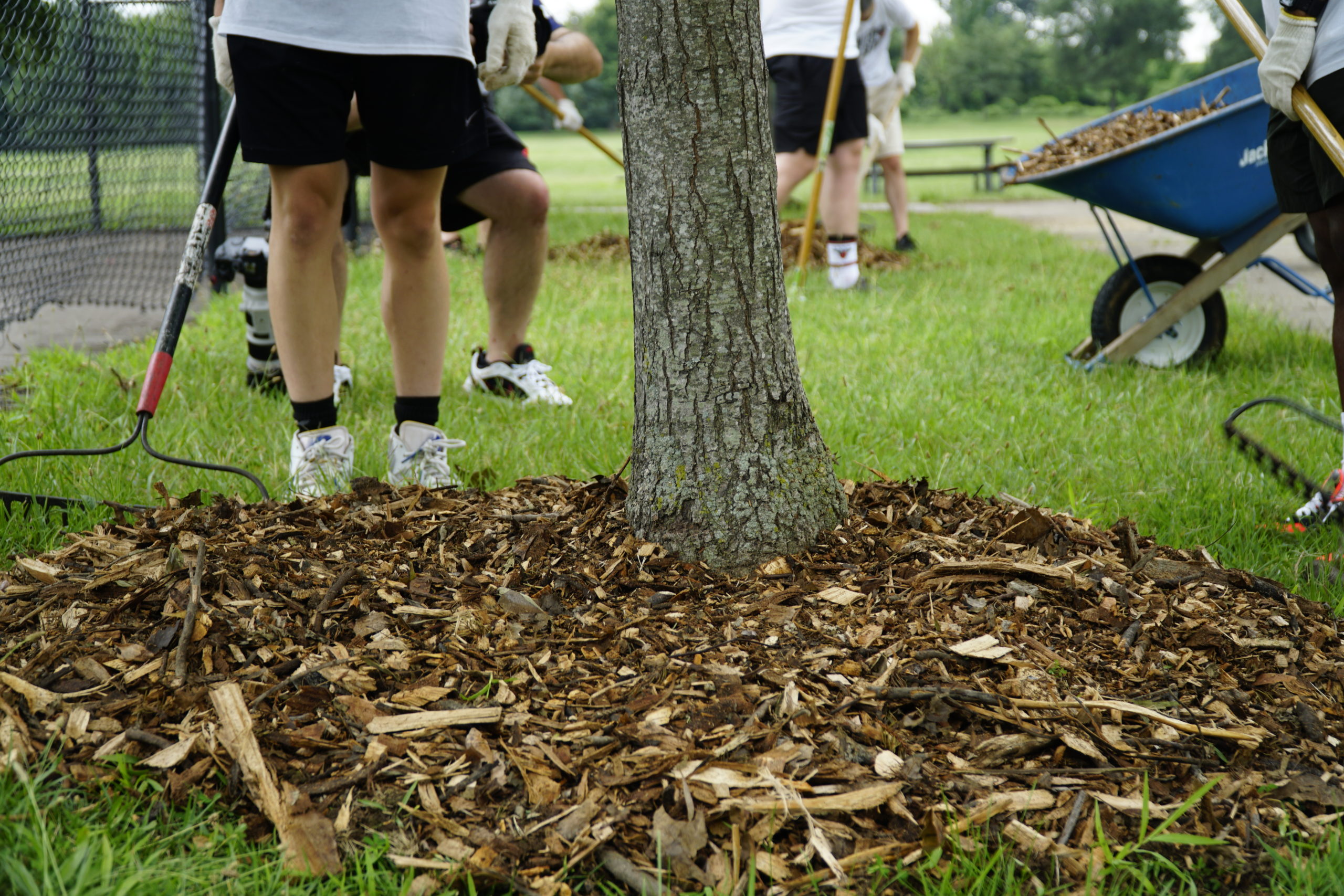THE LEAFLET

Tips on Keeping Happy, Healthy Trees this Summer
Since our summer is packed full of Tree Care events, we decided to provide some answers to a few of the most asked questions about caring for your trees at home.
Crape Myrtle Bark Scale

Photo courtesy of Mississippi State University Extension Service
We have been receiving quite a few inquiries on the funny-looking “white stuff” on crape myrtles. It’s a nasty little pest that has been spreading from the southern states up north in recent years. The least invasive and least chemical option is to gently scrub off the scale using water and dish soap or neem oil. Monitor your crape myrtles periodically, paying special attention to the branch unions where populations might begin to build first.
There are also several treatments you can apply to the bark and soil. Some info here. We recommend reaching out to our partners at Bartlett Tree Experts. As much as we love our Crape Myrtles, if your tree is too far gone – have you considered an Oak, we will plant for free!
Stop Volcano Mulching
Another not-so-hot trend we are seeing this summer is Volcano Mulching. Volcano Mulching is when a thick layer of mulch is laid around a tree, piling up against the base of the trunk, covering the bark and root flare, and unsurprisingly – looks like a volcano. While this method doesn’t have immediate adverse effects, it does impact the long-term health of trees by causing issues such as bark damage, root dehydration, stem girdling roots, no water infiltration, and overall tree stress.
Instead, try following the 3-3-3 rule for mulching around your tree – stacking the mulch higher around the trunk can deprive a tree of the air, water, and nutrients it needs to develop and grow and increases its vulnerability to pests and diseases. Don’t pile the mulch against the trunk of your tree. When you’re finished, the mulch should look more like a doughnut than a volcano.
- Improper Mulching
- Proper Mulching
Other General Info
- Take our 25 To Stay Alive Pledge to water trees on and surrounding your property.
- Follow our weekly watering alerts, published every Monday in the Leaflet and on our homepage, Facebook and Twitter so you know whether or not you should water your young trees.
- Inspect your trees for any damage or concerning areas. Especially young trees after storms. We offer pruning services as part of our Consultation offerings.
- If you’re considering planting trees in the fall, read up on our homeowner planting programs to see how we can help you save money and choose the perfect tree for your space.
Want to know more? We offer further resources in the How-To section of our website, which includes additional tree care tips and video tutorials.

